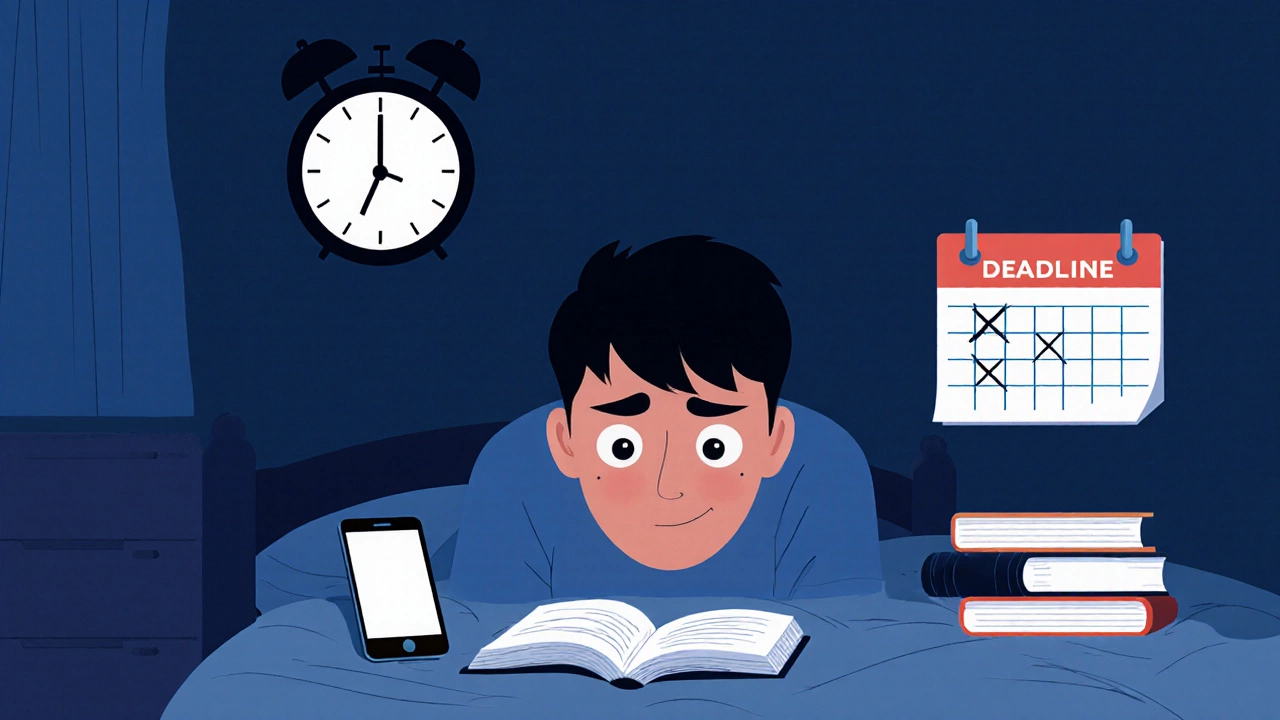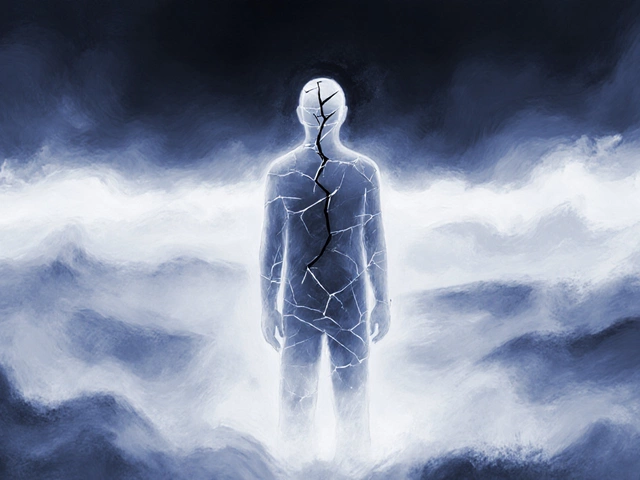ADHD Symptom Peak Calculator
See how ADHD symptoms typically shift across different life stages based on your current age and gender. The tool uses research from the National Institute of Mental Health and longitudinal studies to show typical symptom intensity patterns.
ADHD doesn’t hit everyone the same way at the same time. For some, the symptoms flare up so intensely in childhood that school becomes a struggle. For others, the real chaos shows up in their 30s, when deadlines, parenting, and multitasking pile up and their brain just can’t keep up. So, when is ADHD at its peak? The answer isn’t a single age-it’s a shifting pattern shaped by brain development, environment, and how society expects you to behave.
ADHD Symptoms Are Strongest in Early Childhood
Most research shows that ADHD symptoms are most noticeable and disruptive between ages 7 and 10. This isn’t because the brain suddenly goes haywire-it’s because this is when demands on attention, impulse control, and organization spike. Kids are expected to sit still in class, follow multi-step instructions, wait their turn, and finish homework without constant reminders. For a child with ADHD, these aren’t just challenges-they’re overwhelming.
Studies tracking children with ADHD over decades found that hyperactivity and impulsivity peak around age 7-8. A child might jump out of their seat, blurt out answers, or run across the playground without looking. These behaviors are less about defiance and more about the prefrontal cortex-the part of the brain that brakes impulses-being years behind in development. By age 10, many kids start learning coping tricks, even if they don’t realize it. They might fidget to stay focused, talk to themselves to remember tasks, or zone out to avoid sensory overload.
Adolescence Changes the Game
As kids hit their teens, the nature of ADHD shifts. Hyperactivity often fades. But in its place comes something quieter, and sometimes more damaging: inattention, emotional dysregulation, and procrastination.
Teenagers with ADHD aren’t necessarily louder-they’re more likely to be lost in their phones, forget assignments, or snap at parents over small requests. Their brain still struggles with time perception. A 30-minute homework task feels like it will take forever, so they delay it until the last hour, then panic. Sleep schedules get messed up. Social cues are missed. Grades drop not because they’re lazy, but because their brain’s internal clock is out of sync with the school day.
By 15-17, many teens with ADHD begin to feel isolated. They know they’re different. They see peers managing responsibilities without effort. This mismatch between ability and performance leads to anxiety, low self-esteem, and sometimes substance use as a way to self-medicate. The peak isn’t about intensity anymore-it’s about the emotional cost.
ADHD in Adulthood: The Hidden Peak
Here’s the twist: for many adults, ADHD symptoms feel worse than they ever did as kids. Why? Because the environment doesn’t adjust for them anymore.
As a child, you have parents, teachers, and therapists helping you structure your day. As an adult, you’re expected to manage your own schedule, pay bills on time, remember appointments, cook meals, and hold down a job-all while your brain keeps bouncing between thoughts like a ping-pong ball.
Research from the National Institute of Mental Health shows that 60-70% of children with ADHD continue to have significant symptoms into adulthood. But the peak? For many, it hits between ages 25 and 35. This is when responsibilities multiply: careers demand focus, relationships need emotional regulation, parenting adds layers of chaos. A 30-year-old with ADHD might forget to refill medication, miss a deadline, lose their keys daily, or cry over a spilled coffee because their nervous system is running on empty.
What’s often mistaken for laziness or poor discipline is actually executive dysfunction. The brain isn’t broken-it’s wired differently. And without support, adults with ADHD burn out faster than their peers. They’re more likely to be fired, divorced, or in debt. Yet, many go undiagnosed because they don’t fit the childhood stereotype of the hyperactive boy.

Why the Peak Shifts: Biology Meets Environment
ADHD isn’t a static condition. It’s a dynamic interaction between brain development and life demands.
The prefrontal cortex-the CEO of your brain-doesn’t fully mature until around age 25. That’s why kids with ADHD often improve in high school: their brains are catching up. But then, adult life throws them into a world that doesn’t accommodate neurodivergence. No one gives you a checklist for paying taxes or a timer for grocery shopping. You’re on your own.
Also, women and girls with ADHD often go unnoticed until adulthood. Their symptoms lean more toward inattention than hyperactivity. They might be the quiet kid who daydreams in class, or the adult who stays up until 3 a.m. organizing her closet because she can’t relax until everything is perfect. These are classic ADHD traits too-but they don’t get labeled until the system breaks down.
What Happens After 40?
After 40, many adults with ADHD report a slow decline in symptoms-not because they’ve been cured, but because they’ve built systems. They hire assistants, use apps to automate reminders, choose jobs that match their energy patterns, or learn to say no to overload.
Some find relief through medication, therapy, or lifestyle changes. Others just get better at hiding it. But the underlying brain differences don’t disappear. What changes is their ability to adapt.
Interestingly, a 2023 longitudinal study in the Journal of Clinical Psychiatry found that while hyperactivity dropped sharply after 30, problems with working memory and task initiation remained stable or even worsened for those without support. So the peak isn’t about how loud the symptoms are-it’s about how much they interfere with your life.

It’s Not About Age-It’s About Support
There’s no single age when ADHD is “at its peak.” The real peak is when the mismatch between your brain and your environment becomes unbearable. For some, that’s age 8. For others, it’s 32. For a few, it’s never happened because they had the right support early on.
Early diagnosis and intervention don’t cure ADHD-they give people tools. A child with a structured routine, behavioral therapy, and understanding teachers learns how to navigate the world. An adult who discovers their ADHD at 40 and starts using calendar alerts, noise-canceling headphones, and accountability partners can finally breathe.
ADHD isn’t a flaw. It’s a different operating system. The question isn’t when it peaks-it’s how we can build a world that works for it.
What Helps at Every Stage
- For children (5-12): Clear routines, visual schedules, short tasks, positive reinforcement, and school accommodations like extra time or seating near the front.
- For teens (13-18): Therapy that focuses on emotional regulation, organizational coaching, limiting screen time before bed, and open conversations about self-worth.
- For adults (19-40): Medication if needed, cognitive behavioral therapy (CBT), productivity tools like Todoist or Google Calendar, and workplaces that allow flexible hours or remote work.
- For older adults (40+): Simplifying life, outsourcing tasks, joining ADHD support groups, and accepting that “perfect” isn’t the goal-functioning well is.
There’s no magic fix. But there are real, practical ways to reduce the pain-and that’s more important than knowing the exact age when symptoms are strongest.

 What Is the Hardest Surgery to Recover From? Heart Transplant Recovery Explained
What Is the Hardest Surgery to Recover From? Heart Transplant Recovery Explained
 Most Painful Mental Illness: Which Disorder Is the Hardest to Live With?
Most Painful Mental Illness: Which Disorder Is the Hardest to Live With?
 Top High-Risk Heart Surgeries: Understanding the Dangers
Top High-Risk Heart Surgeries: Understanding the Dangers
 Best Over-the-Counter Alternatives to Ozempic for Weight Loss
Best Over-the-Counter Alternatives to Ozempic for Weight Loss
 Affordable Wegovy Solutions: Discover $25 Monthly Deals through Online Pharmacies
Affordable Wegovy Solutions: Discover $25 Monthly Deals through Online Pharmacies